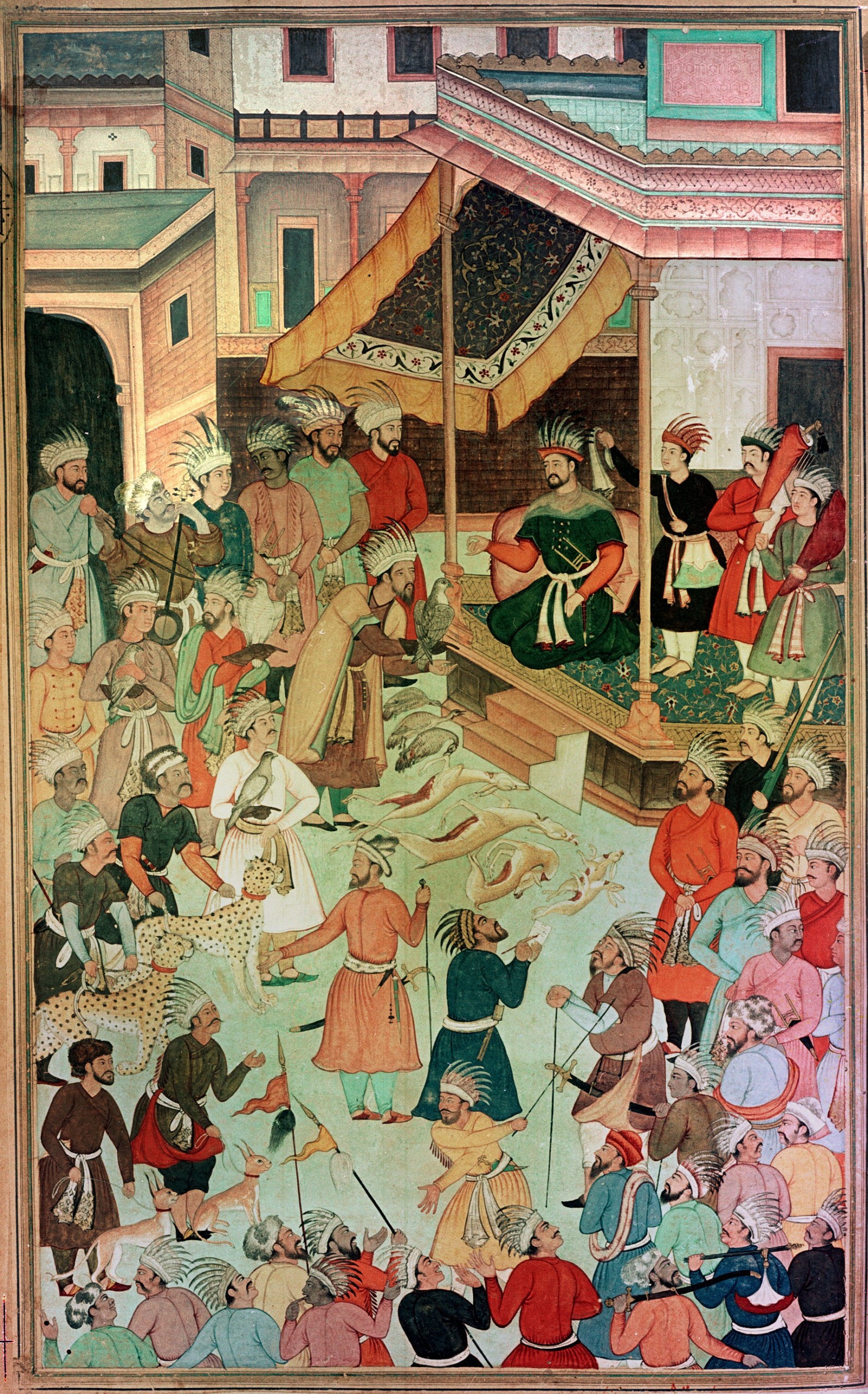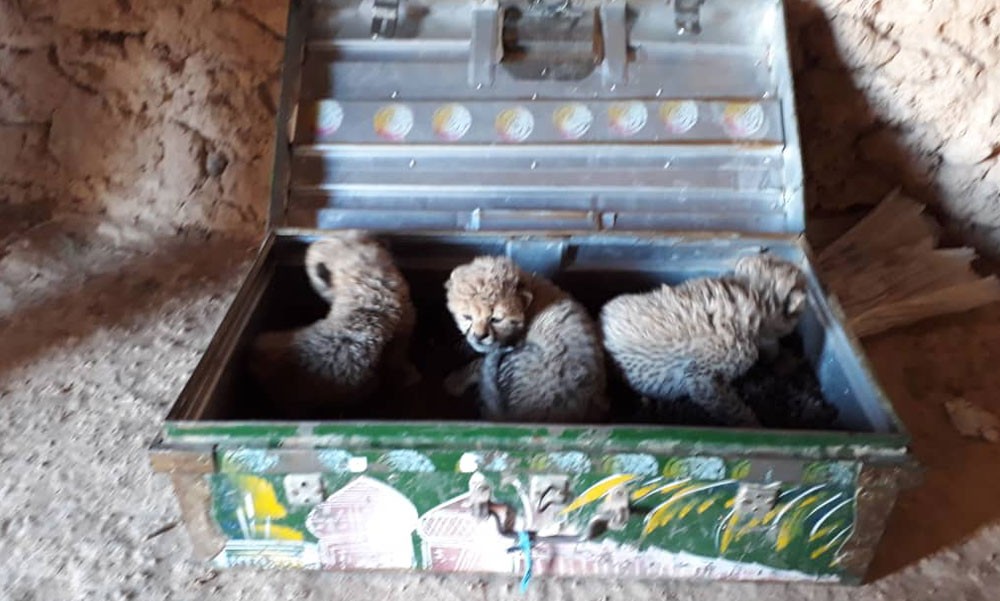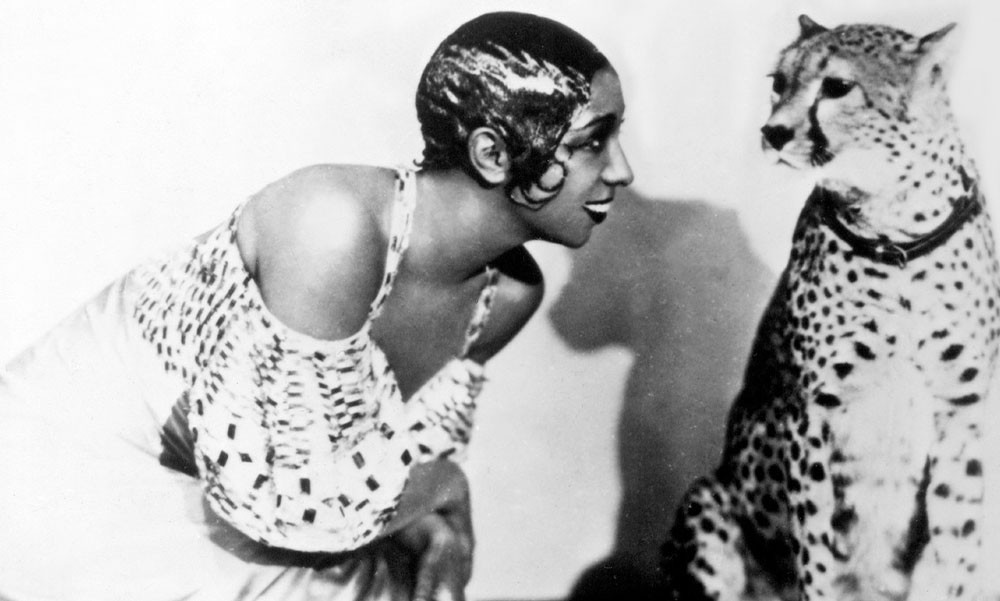Can I Have A Cheetah As A Pet is a question that carries significant ethical, legal, and practical implications; however, you should explore suitable alternatives. PETS.EDU.VN guides you through the realities of cheetah ownership, offering insight into why these magnificent creatures belong in the wild and showcasing domestic cat breeds that capture the essence of a wild cat’s beauty without the ethical concerns. Let’s explore the cheetah’s unique needs, legal considerations, and delve into the world of responsible pet ownership, providing resources and information to help you make informed decisions about exotic animal ownership and find a feline companion that fits your lifestyle.
1. Understanding the Allure of Cheetahs as Pets
The idea of owning a cheetah, the world’s fastest land animal, is undeniably captivating. Throughout history, cheetahs have been symbols of status and power, kept by royalty and the elite. But while the allure of owning such a majestic creature may be strong, it’s crucial to understand the realities behind this dream. Cheetahs are not domesticated animals; they are wild predators with specific needs that cannot be met in a typical household environment. Considering a cheetah as a pet requires a deep understanding of their biology, behavior, and conservation status.
1.1 The Historical Context of Cheetah Ownership
For millennia, cheetahs have been associated with human prestige. Ancient Sumerians depicted them on official seals as early as 3,000 BC, and Egyptians believed cheetahs carried pharaohs’ spirits to the afterlife. Persian shahs, Italian nobles, Russian princes, and Indian royalty all kept cheetahs as status symbols, using them for hunting.
During the 16th century, Indian Mogul Akbar the Great kept over 39,000 cheetahs for coursing, but recorded only one litter born in captivity. This constant drain on wild populations led to a decline in cheetah numbers in Asia. Even in the 1920s, celebrities like Josephine Baker were known for parading around with their pet cheetahs, further fueling the perception of cheetahs as exotic companions. Today, however, the demand for cheetahs as pets is concentrated in the Arabian Peninsula, driving the illegal wildlife trade and threatening the survival of these vulnerable animals.
1.2 The Modern Demand for Exotic Pets
Despite increased awareness of conservation issues, the demand for exotic pets, including cheetahs, persists. This demand is fueled by social media, where images of cheetahs and other wild animals as pets create a false sense of their suitability for domestic life. The reality, however, is far from glamorous. The illegal wildlife trade, driven by this demand, causes immense suffering for these animals. Cubs are often taken from their mothers at a young age, subjected to horrific conditions during transport, and often die due to malnutrition, dehydration, and stress. It’s essential to recognize that owning a cheetah contributes to this cruel trade and endangers the species.
2. The Realities of Cheetah Care
Owning a cheetah is vastly different from owning a domestic cat or dog. Cheetahs have evolved to thrive in the wild, and their physical and behavioral needs are extremely challenging to meet in a domestic setting.
2.1 Specialized Dietary Needs
Cheetahs are obligate carnivores, meaning their diet consists solely of meat. In the wild, they consume a variety of prey animals, providing them with essential nutrients. Replicating this diet in captivity is complex and expensive. Cheetahs require a carefully balanced diet of raw meat, bones, and organs to ensure they receive all the necessary vitamins and minerals. Commercial cat food is not an adequate substitute, as it lacks the essential nutrients cheetahs need to thrive.
Table: Nutritional Requirements of Cheetahs
| Nutrient | Requirement | Source in Wild Diet | Source in Captivity |
|---|---|---|---|
| Protein | High (around 70% of diet) | Muscle meat | High-quality raw meat (e.g., beef, chicken, rabbit) |
| Fat | Moderate (around 20-30% of diet) | Fat tissue | Fatty cuts of meat, supplemented with fish oil |
| Calcium | Essential for bone health | Bones | Ground bone meal supplement |
| Taurine | Crucial for heart and eye health | Organ meat | Heart, liver, and other organ meats |
| Vitamin A | Important for vision and immune function | Liver | Liver supplement or appropriate amount of liver in the diet |
| Vitamin D | Necessary for calcium absorption | Sunlight & Liver | Vitamin D supplement, especially for indoor cheetahs |
| Trace Minerals | Zinc, iron, copper, etc. | Organ meat & Blood | Mineral supplement designed for carnivores |




A lack of proper nutrition can lead to serious health problems, including bone deformities, organ failure, and even death.
2.2 Extensive Exercise Requirements
Cheetahs are built for speed. Their bodies are designed for short bursts of intense activity, and they need ample space to run and exercise. Confining a cheetah to a small yard or indoor space is detrimental to their physical and mental well-being. They require large enclosures with plenty of room to run, jump, and explore. Zoos and wildlife sanctuaries often provide specialized treadmills or “lure courses” to allow cheetahs to express their natural hunting behaviors and maintain their physical fitness.
2.3 Unique Behavioral Characteristics
Cheetahs are solitary animals, and while they may tolerate the presence of other cheetahs in captivity, they do not form the same social bonds as domestic animals. They communicate through scent marking, vocalizations, and body language, which can be difficult for humans to interpret.
Unlike domestic cats, cheetahs are not easily litter-box trained and their urine and feces have a very strong smell. They also shed a lot of hair, making them difficult to keep indoors. Furthermore, cheetahs have powerful claws and teeth, and even playful behavior can result in serious injuries.
2.4 Veterinary Challenges
Finding a veterinarian experienced in treating cheetahs can be a challenge. Their unique physiology and behavior require specialized knowledge and equipment. Routine procedures, such as vaccinations and blood draws, can be stressful for both the cheetah and the veterinarian. Furthermore, many common medications used in domestic animals are not safe or effective for cheetahs.
2.5 Environmental Enrichment
In the wild, cheetahs spend their days hunting, exploring, and interacting with their environment. In captivity, it’s crucial to provide them with environmental enrichment to stimulate their minds and prevent boredom. This can include puzzle feeders, novel scents, climbing structures, and opportunities to interact with novel objects. Without adequate enrichment, cheetahs can develop behavioral problems such as pacing, self-mutilation, and aggression.
3. Legal and Ethical Considerations
Beyond the practical challenges, owning a cheetah raises serious legal and ethical concerns.
3.1 Legal Restrictions on Exotic Animal Ownership
Many countries, states, and municipalities have strict laws regulating or prohibiting the ownership of exotic animals, including cheetahs. These laws are in place to protect both the animals and the public. Owning a cheetah illegally can result in hefty fines, confiscation of the animal, and even criminal charges. It’s crucial to research and understand the laws in your area before even considering owning a cheetah.
3.2 Conservation Status and the Illegal Wildlife Trade
Cheetahs are listed as “Vulnerable” by the International Union for the Conservation of Nature and Natural Resources (IUCN). With fewer than 7,500 cheetahs remaining in the wild, every individual is crucial to the survival of the species.
The illegal wildlife trade poses a significant threat to cheetah populations, particularly in the Horn of Africa, where cubs are poached to meet the demand for exotic pets. This trade not only reduces the number of cheetahs in the wild but also disrupts their social structure and genetic diversity. By purchasing a cheetah, you are directly contributing to this cruel and unsustainable trade.
3.3 Animal Welfare Concerns
Even if it were legal and practical to own a cheetah, the ethical implications are significant. Cheetahs are wild animals that deserve to live in their natural habitat, where they can express their natural behaviors and contribute to the ecosystem. Confining a cheetah to a domestic environment deprives them of these opportunities and can lead to a range of physical and psychological problems.
4. The Work of Conservation Organizations
Organizations like the Cheetah Conservation Fund (CCF) are working tirelessly to protect cheetahs and combat the illegal wildlife trade.
4.1 Cheetah Conservation Fund (CCF)
The CCF is a leading organization dedicated to the conservation of cheetahs and their ecosystems. They work to combat the illegal wildlife trade through a variety of programs, including:
- Veterinary Expertise: Assisting Somaliland’s Ministry of Environment & Climate Change (MoECC) with cub rescue missions and operating three Cheetah Safe Houses in Hargeisa.
- Research: Banking DNA samples to establish the origin of confiscated cheetahs and surveying wild cheetah populations.
- Education: Training livestock veterinarians in wildlife medicine and conducting outreach in communities where trafficking is known to occur.
- Policy: Working with the Arabian Leopard Fund to reduce demand for illegal pets and supporting the Horn of Africa Wildlife Enforcement Network (HAWEN).
The CCF also operates a Cheetah Rescue & Conservation Centre in Somaliland, providing naturalistic housing for rescued cheetahs and promoting education and tourism opportunities.
4.2 How You Can Support Cheetah Conservation
There are many ways to support cheetah conservation efforts, including:
- Donating to conservation organizations: Your financial support can help fund vital research, rescue, and education programs.
- Raising awareness: Share information about the threats facing cheetahs and the importance of conservation.
- Avoiding the purchase of exotic pets: By refusing to participate in the illegal wildlife trade, you can help reduce the demand for cheetahs as pets.
- Reporting illegal activities: If you see or hear about illegal activities involving cheetahs or cheetah products, contact the appropriate authorities.
4.3 CCF’s History of Action Against IWT
| Year | Action |
|---|---|
| 2005 to 2007 | CCF began monitoring IWT of cheetahs and assisting Ethiopia with placement of confiscated cubs. CCF became a founding member of the Coalition Against Wildlife Trafficking (CAWT). |
| 2011 | CCF assists Somaliland with placement of cheetah cubs confiscated from the illegal wildlife pet trade for the first time. |
| 2013 to present | CITES tabled the issue of cheetah trafficking at its 13th Conference of the Parties (CoP13) held in Bangkok. Since then, CCF has been working with CITES and non-government organizations (NGOs), to address issues such as law enforcement, demand reduction, procedures for the care and placement of confiscated cheetahs, and cyber-crime. |
| 2019 | CCF receives a 2.75 year-grant from UKAID’s IWT Challenge Fund, known as LICIT, to build capacity in wildlife trade law enforcement in the Horn of Africa. Through LICIT, CCF has partnered with the International Fund for Animal Welfare (IFAW) and Legal Atlas (LA) to deliver training and support the establishment of national and regional wildlife enforcement networks in Ethiopia, Somaliland, Somalia and Yemen. |
| 2017 – 2020 | CCF establishes three Safe Houses in Hargeisa, Somaliland with a well-equipped veterinary clinic and professional staff. |
| 2021 | CCF finishes the Master Plan for its 800-hectare Cheetah Rescue and Conservation Centre on land the Somaliland government has set aside to become its first national park. This new facility will provide naturalistic housing for the rescued cheetahs, plus education, tourism opportunities and hope for future generations. |
| 2023 | The Cheetah Rescue and Conservation Centre is move-in ready and all the cheetahs, one leopard and one caracal are moved from the Cheetah Safe Houses in Hargeisa to their new home in Geed-Deeble. |
5. Responsible Pet Ownership: Finding a Suitable Alternative
If you’re drawn to the beauty and majesty of cheetahs, there are many ways to appreciate them without contributing to their exploitation. Visiting accredited zoos and wildlife sanctuaries, supporting conservation organizations, and educating yourself about cheetahs and their ecosystems are all responsible ways to engage with these amazing animals.
5.1 Domestic Cat Breeds with Wild Appearances
For those who admire the unique appearance of cheetahs, several domestic cat breeds exhibit similar spotted or patterned coats. These breeds offer the opportunity to enjoy the beauty of a wild cat without the ethical and practical challenges of owning an exotic animal.
- Bengal: Known for their distinctive rosette markings and athletic build, Bengals resemble miniature leopards.
- Savannah: A hybrid breed resulting from a cross between a domestic cat and a serval, Savannahs have a spotted coat and a tall, slender body.
- Egyptian Mau: One of the oldest domesticated cat breeds, Egyptian Maus have a naturally spotted coat and a graceful appearance.
- Ocicat: Despite their wild appearance, Ocicats are entirely domestic cats with a spotted coat pattern.
These breeds offer the opportunity to enjoy the beauty of a wild cat without contributing to the exploitation of endangered species.
5.2 The Joys of Domestic Cat Companionship
Domestic cats have been companions to humans for thousands of years, offering affection, entertainment, and stress relief. They are relatively easy to care for, adaptable to a variety of living situations, and can provide years of companionship. Adopting a cat from a local shelter or rescue organization is a responsible way to add a furry friend to your family and help reduce the number of homeless animals.
5.3 Alternatives to Traditional Pet Ownership
If you’re not able to commit to owning a pet full-time, there are other ways to experience the joys of animal companionship. Volunteering at a local animal shelter, fostering animals in need, or simply spending time with friends’ pets can provide you with the opportunity to interact with animals and make a positive impact on their lives.
6. IWT hashtags for social media
#endwildlifetrafficking | #endwildlifecrime | #savethecheetah | #stopcheetahtrafficking | #endcheetahtrade | #stopthecheetahtrade
7. The Future of Cheetah Conservation
The future of cheetahs depends on our collective efforts to protect them and their habitats. By supporting conservation organizations, raising awareness about the threats they face, and making responsible choices as consumers and pet owners, we can help ensure that these magnificent animals thrive for generations to come.
7.1 Ongoing Research and Conservation Efforts
Scientists and conservationists are constantly working to learn more about cheetahs and develop effective strategies for their protection. This includes studying their genetics, behavior, and ecology, as well as working with local communities to reduce human-wildlife conflict and combat poaching. Continued research and monitoring are essential for understanding the challenges facing cheetahs and developing effective conservation strategies.
7.2 The Role of Education and Awareness
Education and awareness are crucial for changing attitudes and behaviors that threaten cheetahs. By educating the public about the importance of conservation, the dangers of the illegal wildlife trade, and the ethical implications of owning exotic animals, we can help create a more sustainable future for cheetahs and other endangered species.
7.3 Creating a Sustainable Future for Cheetahs
Creating a sustainable future for cheetahs requires a multi-faceted approach that addresses the root causes of their decline. This includes protecting their habitats, combating poaching and the illegal wildlife trade, reducing human-wildlife conflict, and promoting sustainable development that benefits both people and wildlife. By working together, we can create a world where cheetahs can thrive in the wild and inspire future generations with their beauty and grace.
8. History of Cheetahs As Pets
For thousands of years, the elite of the ancient world kept cheetahs in captivity. The earliest record of the cheetah’s long association with humans dates back to the Sumerians in 3,000 BC where a leashed cheetah, with what appears to be a hood on its head, is depicted on an official seal. In Egyptian history, it was believed that the cheetah would swiftly carry away the Pharaoh’s spirit to the afterlife, and symbols of cheetahs have been found on many statues and paintings in royal tombs.
Persian shahs, Italian nobles, Russian princes, and Indian royalty kept cheetahs for hunting and as status symbols representing their wealth and rank. Because cheetahs could not easily breed in captivity, individuals were taken from the wild to support the demand. The ancient pet trade diminished wild cheetah populations, especially in Asia. During his 49-year reign as an Indian Mogul in the 16th century, Akbar the Great, had more than 39,000 cheetahs for coursing, a hunting sport. They were called “Khasa” or the “Imperial Cheetahs.” All were taken from the wild. The Mogul kept detailed records that indicate only one litter was born during all those years. Because of this continuous drain on the wild populations, the numbers of cheetahs declined throughout Asia. In the early 1900s, India began to import cheetahs from Africa for hunting purposes.
In the roaring 1920s, dancer and film star Josephine Baker was among the most celebrated performers to headline the revues of the Folies Bergère in Paris. Her performances caused a sensation in the city. When she walked down the street with her pet cheetah, Chiquita, crowds formed and people took photos that appeared in local newspapers. Chiquita famously traveled the world with Baker, always riding in her car and sleeping in her bed.
During the same era, scandal-plagued socialite Enid Lindeman was renowned for her menagerie of animals, including hyraxes, parrots, a mongoose, a pair of foxes and a pet cheetah. She outlived four husbands to earn the nickname “Lady Killmore.” Enid was famous for walking her diamond-collared cheetah through Hyde Park and driving it around London in the front seat of her Bentley.
Today, the demand for pet cheetahs is centered mostly on the Arabian Peninsula. Fortunately, the governments of Saudi Arabia and the United Arab Emirates, the thought leaders of the region, are actively engaged with CCF and working to stop the illegal pet trade.
9. Collaborative Veterinary University Partners
Visiting veterinarians from the European universities listed below assist with cheetah care and give lectures for veterinary students at the University of Hargeisa.
| Institution | Country | Website |
|---|---|---|
| Vétérinaires Sans Frontières Czech Republic (VSF-CZ), CZ | CZ | Website |
| University of Agricultural Sciences and Veterinary Medicine (USAMV) of Cluj-Napoca, RO | RO | Website |
| University of Veterinary and Pharmaceutical Sciences (UVPS) Brno, CZ | CZ | Website |
| University of Hargeisa (OUH), NM | NM | Website |
| University of Burao (UB), SL | SL | Website |
10. Illegal Wildlife Trade Partners
CCF has reciprocal relationships with other organizations working to combat the illegal trade in cheetahs.
| Organization | Website |
|---|---|
| Convention on the Conservation of Migratory Species of Wild Animals (CMS) | Website |
| Convention on International Trade in Endangered Species of Wild Fauna and Flora (CITES) | Website |
| Daughters for Earth | Website |
| Explorers Club | Website |
| Ethiopian Wildlife Conservation Authority (EWCA) | Website |
| Horn of Africa Enforcement Network (HAWEN) | Website |
| International Fund for Animal Welfare (IFAW) | Website |
| IUCN Cat Specialist Group | Website |
| IUCN Save Our Species | Website |
| Legal Atlas | Website |
| Rainforest Trust | Website |
| Range Wide Conservation Program for Cheetah & Wild Dog Program | Website |
| Somaliland Ministry of Environment and Climate Change (MoECC) | Website |
| Taiwan International Cooperation and Development Fund (ICDF) | Website |
| TRAFFIC – The Wildlife Trade Monitoring Network | Website |
| United Kingdom Department for Environment, Food and Rural Affairs (Defra) | Website |
| U.S. Fish & Wildlife Service | Website |
| Welt Hunger Hilfe (WHH) | Website |
11. FAQ: Cheetahs as Pets
Q1: Is it legal to own a cheetah?
No, in many places, it is illegal to own a cheetah due to conservation laws and public safety concerns. Laws vary by region, so it’s crucial to check local regulations.
Q2: What are the main reasons cheetahs don’t make good pets?
Cheetahs require specialized care, diets, extensive space to roam, and cannot be easily domesticated. Their needs are difficult and expensive to meet in a typical household.
Q3: How does owning a cheetah impact conservation efforts?
Owning a cheetah contributes to the illegal wildlife trade, which threatens the survival of the species by reducing wild populations and disrupting ecosystems.
Q4: What kind of diet does a cheetah need?
Cheetahs need a diet primarily of raw meat, bones, and organ meat to mimic their natural carnivorous diet, requiring careful nutritional balance.
Q5: Can a cheetah be litter-box trained?
No, unlike domestic cats, cheetahs cannot be trained to use a litter box, and their waste has a strong odor, making them unsuitable for indoor living.
Q6: What are some domestic cat breeds that resemble cheetahs?
Breeds like Bengals, Savannahs, and Egyptian Maus have spotted coats and athletic builds that resemble cheetahs, offering a domestic alternative.
Q7: How can I support cheetah conservation efforts?
You can support cheetah conservation by donating to organizations like the Cheetah Conservation Fund, raising awareness, and avoiding the purchase of exotic pets.
Q8: What kind of veterinary care do cheetahs require?
Cheetahs need specialized veterinary care from professionals experienced with exotic animals, as common medications for domestic animals may not be safe for them.
Q9: Why is environmental enrichment important for cheetahs in captivity?
Environmental enrichment is important to stimulate their minds and prevent boredom, reducing the risk of behavioral problems like pacing and aggression.
Q10: Where is the demand for pet cheetahs highest today?
Today, the demand for pet cheetahs is primarily concentrated in the Arabian Peninsula, driving the illegal trade and endangering these animals.
Owning a cheetah is a complex issue with significant ethical, legal, and practical implications. While the allure of owning such a majestic creature may be strong, it’s important to recognize that cheetahs are wild animals that belong in their natural habitat. By supporting conservation organizations, raising awareness about the threats they face, and making responsible choices as consumers and pet owners, we can help ensure that cheetahs thrive for generations to come. Remember, the beauty and wonder of cheetahs are best appreciated in the wild, where they can roam freely and fulfill their role in the ecosystem.
Ready to explore the world of responsible pet ownership? Visit pets.edu.vn today for more information on domestic cat breeds, pet care tips, and resources for supporting animal conservation efforts. Let us help you find the perfect feline companion that aligns with your values and lifestyle. Contact us at 789 Paw Lane, Petville, CA 91234, United States, or Whatsapp: +1 555-987-6543.